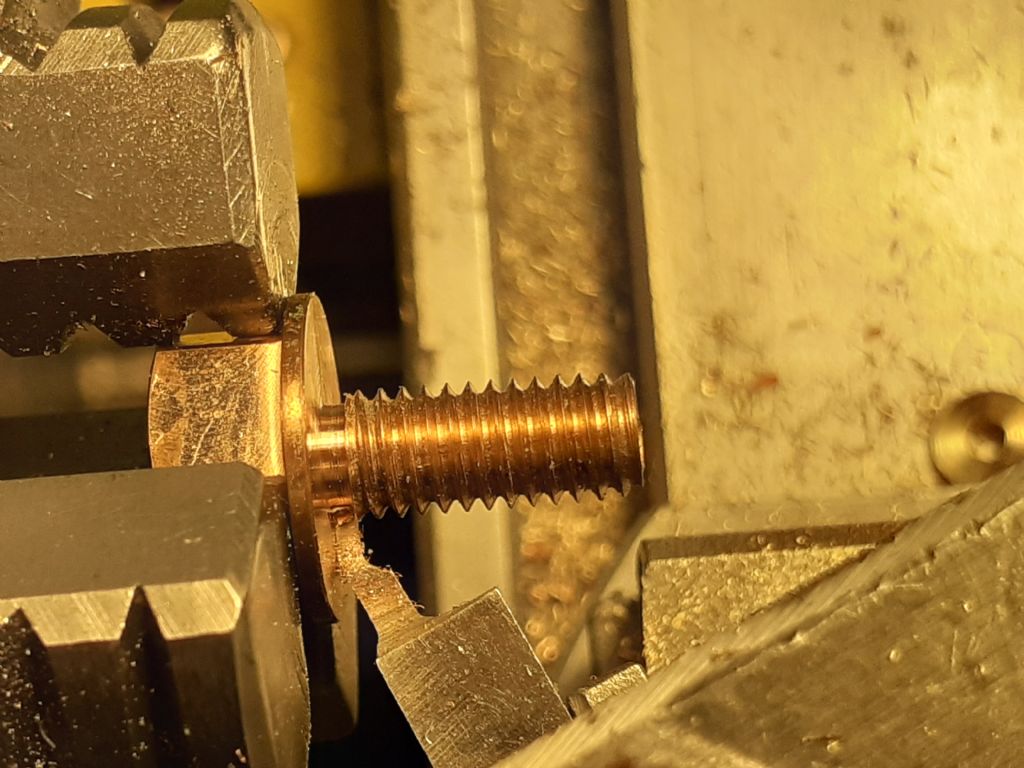Posted by Iain Downs on 08/02/2023 15:39:35:
Do you think I should be running as fast as possible (for this, we have a 1.8mm dia target), or run slower and more controlled?
Given that you're machining 304 stainless, I would start slow (with plenty of the best cutting oil that you own). With such a fine tool, the natural tendency is to be tentative with the feed and, on stainless, the result is likely to be that the tool rubs, hardens the surface and then, when you apply a little bit more pressure, digs in and breaks.
FWIW, my advice would be:
– Run slowly (a few hundred RPM, or less);
– Plenty of oil;
– Feed steadily 'through' the surface of the part (I.e. don't wind the tool until it touches the surface and then start feeding);
– When you see the curl of swarf appear keep feeding steadily until you're at your target depth. DON'T STOP.
On the tool: Make sure that the tip is the widest part – it looks from that photo that the tool may have tapered towards the tip (although the actual tip has gone) – you don't want the tool to wedge itself into the slot it has cut, or it will jam and break.
Difficult to tell from the photos, but it looks like there is quite a large relief angle on the front of the tool – if so, reduce this to the minimum possible (5° maybe?) to better support the cutting edge.
I am a heathen, and rough out any HSS tools I need with an angle grinder – much quicker than a wheel – and sharpen them on a belt sander. That said, 3/8" is a big chunk of HSS to start with if you want a 0.3mm wide blade. Broken centre drills, etc. will need less grinding, but you will need to make holder for them.
Exhibit A (set up for internal grooving):

(3mm grooving tool facing the camera; 1mm from a previous job on the other end.)
My 2p, anyway.
Howard Lewis.








